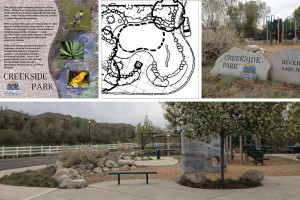Tips for creating a minimalist landscape design
 Landscaping ideas mostly transcends the space or area that you design; it tells a lot about the owner of such an area. Your landscaping idea also gives the first impression to any visitor in your homes. So, you might want to take that aspect a little more seriously than you have so far.
Landscaping ideas mostly transcends the space or area that you design; it tells a lot about the owner of such an area. Your landscaping idea also gives the first impression to any visitor in your homes. So, you might want to take that aspect a little more seriously than you have so far.
There are plenty of landscape ideas to choose from, and people are even creating more terrific improvisations recently. From your ornate/fruit gardens to the lawn that adorns the ground, the hedges, fencing, and positioning of other landscape materials, there are over a hundred ways you can arrange them.
A landscaping idea that is “fit for all” spaces and almost ageless is the Minimalist landscape design. The Minimalist design style is not new to any landscape planner, and yet it has continued to be in vogue even hundreds of years later. Fairly, a minimalist design for your landscape is the easiest to maintain, simplest to plan, and the most classic compared to any other.
Whether you are into plants, rocks, fancy fencing, edible gardens, and whatever, there is always space for all these in a minimalist landscape design.
- Simple, relevant landscape equipment
When creating minimalist designs, those huge rocks, fancy chairs at the center of dining tables and chairs, and other things which serve no useful purpose should go. Prune down on any scattered or shiny ornaments in the area, and focus on neat, clutter-free, and warm surroundings
- Use more original elements
When going for elements around the area, it is better to use more original and native elements. Not only do these elements complement the surroundings, but they are also more resistant to diseases and pests in the area.
When planning your garden, plant more native crops or fruits or vegetables. It is also easier to maintain native plants compared to alien plants in the garden.
- Learn to section off parts in your Landscapes
Every minimalist landscape design should have a clear-cut and distinguishable boundary from each other. Your gardens should be properly sectioned from the rest of the property, foot-paths and driveways should be distinct, preferably in orthogonal forms, and simple natural elements like trees, rocks, can serve as a boundary.
If the area is wide enough, you should separate each garden; vegetable from herb gardens, flower gardens, fruit gardens, and so on. These demarcations will make your landscape look simple, neater, and classy.
- Make use of raised beds as much as possible
Raised beds (usually fenced with concrete) provide for simple, casual aesthetics in your landscape designs. It also draws focus to the basic and yet stylish way you arrange various plants on the bed. It also delineates the raised garden parts from other structures.
- Rocks, vases, baskets, and more natural objects
There should be a place for everything in your Minimalist design, and alien materials should have no place. Some landscape designs even use little carved rocks as external dining tables and chairs, but it all depends on the other surrounding design elements.
In fencing your gardens, you can use creeping green plants. They add more beauty and interest to your gardens. However, overdoing these things will get you farther from the design styles.
- A central piece of attraction
Whether it’s a bare large rock at the center, a flag, or a nice, simple water fountain that looks natural, it all fits the design well. No more than two of these landmarks should be within a landscape area, and you should place them in strategic areas too. Also, make sure to conceal the workings of whatever central piece you are installing.
- Simple Colors and Toning
The color tones or theme is important in every landscape design. For minimalist designs, simple monochrome colors are the best. Lush deep green lawns, demarcated by wide sandy-colored footpaths, with furniture a shade of the grounds, and complementary colors of flowers will do just great.
You will be stupefied by what amazing wonder the sun has when reflecting on these elements.
- Simple furniture, baskets, and plants
External furniture should be as simple, basic, and complimentary in color as ever. You can decide to use either metal or wooden furniture; it doesn’t matter as long as they blend in with the surroundings. The trees should also follow some sort of pattern; tall, slim, needle-pointed leaves plants, creeping plants, or dwarfed plants should all be adopted moderately in the surrounding.
- Balance is all you need in a minimalist design
Nothing speaks balance than when you use elements that blend with the surroundings, architecture, and other landscape elements. A smooth, round rock as a central piece would go perfectly with low-cut lawns and green creeping plants around garden hedges. Some homes even make the color of the roof a shade of the colors of the plant trunks.
Make enough space among elements, define areas naturally, demarcate between sections, trim plants neatly, use simple furniture styles and do colors wisely.
Wrapping Up
A minimalist design style can be so easy and intriguing to create, and yet you can tweak your styles. Most people prefer it for its simple, ascetic, bare, and appealing look. It has a simple principle: Simple is best.
No design style comes close to a simple minimalist landscape design. For more information, contact us here today. We look forward to working with you on your next project.

